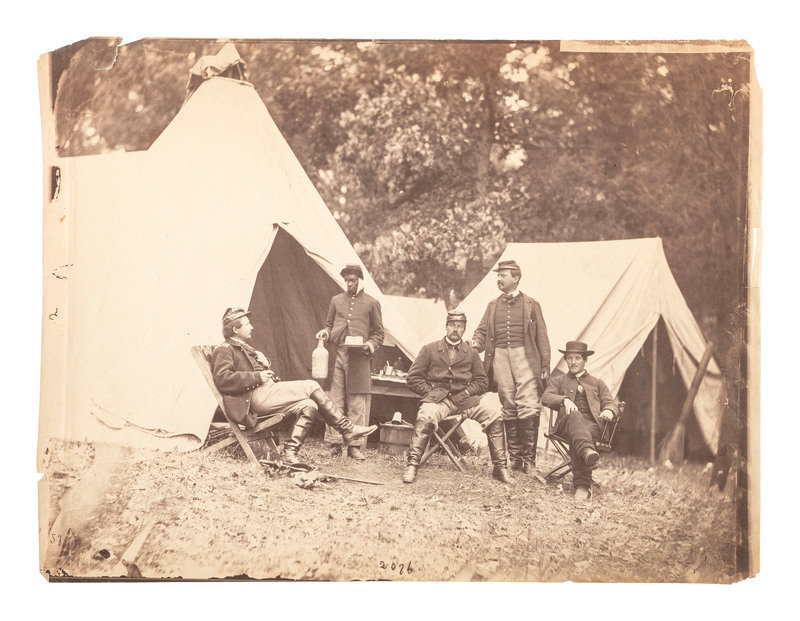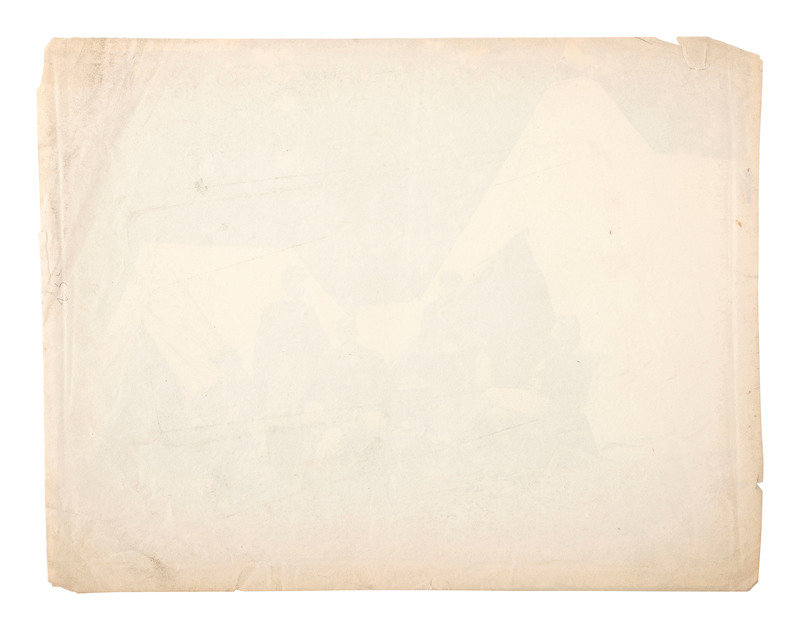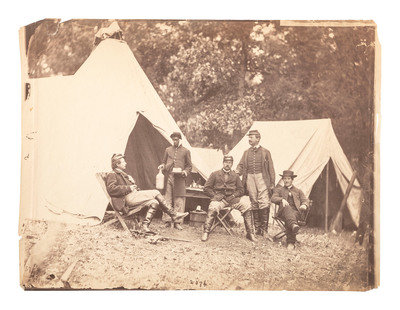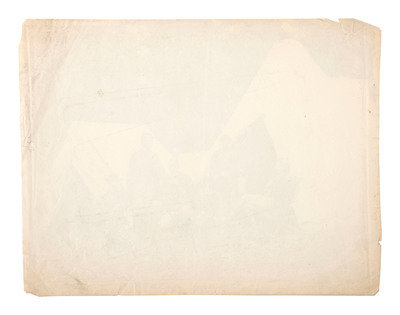Condition Report
Contact Information
Auction Specialist
Lot 65
[CIVIL WAR]. [GARDNER, Alexander (1821-1882), photographer. What do I Want John Henry, November 1862. Washington, DC: Alexander Gardner, 1865].
Sale 1095 - American Historical Ephemera & Photography, Featuring Property from the James Milgram, M.D., Collection of Broadsides, Ephemeral Americana & Historical Documents
Day 1 Lots 1-403
Nov 3, 2022
10:00AM ET
Day 2 Lots 404-634
Nov 4, 2022
10:00AM ET
Live / Cincinnati
Own a similar item?
Estimate
$400 -
600
Price Realized
$1,500
Sold prices are inclusive of Buyer’s Premium
Lot Description
[CIVIL WAR]. [GARDNER, Alexander (1821-1882), photographer. What do I Want John Henry, November 1862. Washington, DC: Alexander Gardner, 1865].
10 x 7 1/2 in. unmounted albumen photograph (toning, edge and corner wear, including some chips, few short tears, some corner loss). Although uncredited, the photograph was produced by Alexander Gardner and published as Plate 27 in Gardner's Photographic Sketch Book of the Civil War. A camp scene featuring a group of Union officers gathered before a Sibley tent, with “contraband,” a formerly enslaved African American, serving food and drink to the officer seated at far left. The officer seated at center has been identified as Captain John R. Coxe, US Army Commissary Department. The description that accompanies the scene in Gardner's Sketch Book notes, “When fatigued by long exercise in the saddle, over bottomless roads, or under the glowing Southern sun, John’s master would propound the query 'What do I want John Henry?'"
Alexander Gardner (1821-1882) was one of the foremost photographers of the Civil War. Gardner was born in Scotland in 1821. In 1851, Gardner paid a visit to the Great Exhibition in Hyde Park, New York, where he saw the photographs of Mathew Brady for the first time. In 1856, Gardner moved to New York and found employment with Mathew Brady as a photographer. In 1858, Brady put him in charge of the entire gallery. With the start of the Civil War in 1861, the demand for portrait photography increased, as soldiers on their way to the front posed for images to leave behind for their loved ones. Gardner became one of the top photographers in this field. After witnessing the battle at Manassas, Virginia, Brady decided that he wanted to make a photographic record of the war. Brady dispatched Gardner and other photographers to the field to record the images of the conflict. In November of 1861, Gardner was granted the rank of honorary Captain on the staff of General George McClellan. He made a number of photographs of the aftermath of America’s bloodiest day, the Battle of Antietam. Gardner went on to cover more of the war’s terrible battles, including Fredericksburg, Gettysburg, and the siege of Petersburg. He also took what is considered to be the last photograph of President Abraham Lincoln, just 5 days before his assassination. After the war, Brady established a gallery for Gardner in Washington, DC. In 1867, Gardner was appointed the official photographer of the Union Pacific Railroad, documenting the building of the railroad and the Native American tribes that he encountered. In 1871, Gardner gave up photography to start an insurance company. He lived in Washington until his death in 1882.
Property from William H. Itoh, collector, historian and retired Foreign Service Officer



